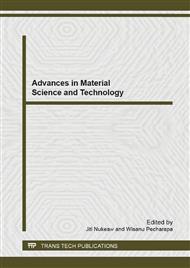p.154
p.159
p.164
p.169
p.174
p.179
p.184
p.189
p.194
The Effect of Injection Parameters on Morphology in Metal Injection Moulding
Abstract:
The aim of this work is to investigate the effect of injection parameters on morphology in stainless steel 316L metal injection moulding. In the experiment, samples were prepared by injection moulding process with varies parameters such as gate locations, pressures and speeds. The physical appearance of green parts was examined. After that, the cross sections of samples were investigated by scanning electron microscope including chemical analysis of the phase determined by x-ray energy dispersive spectroscopy. The experimental results showed that a perpendicular gate injection caused a separate section between outer skin and core at the cross section of specimens. The high pressure and speed for both injection directions caused crack. In conclusion, a parallel gate injection of feedstock with low pressure and speed was successful to mould the homogeneous samples without black streak, crack and phase separation. Therefore, the observed results could be useful to establish guideline for moulding in order to receive the complete green parts without defects
Info:
Periodical:
Pages:
174-178
Citation:
Online since:
September 2013
Authors:
Keywords:
Price:
Сopyright:
© 2013 Trans Tech Publications Ltd. All Rights Reserved
Share:
Citation:


